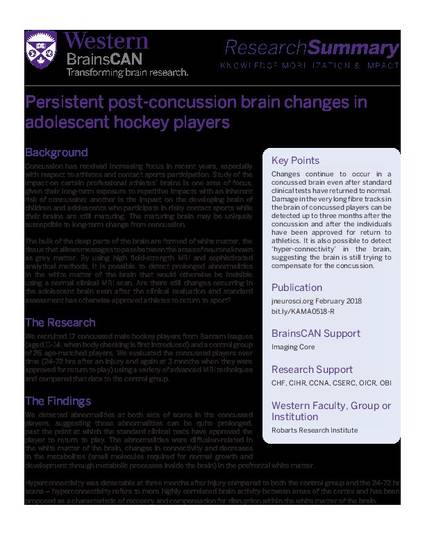
Article
Persistent post-concussion brain changes in adolescent hockey players
The research article is available in BrainsCAN Publications as well as in Neurology 2017;89;2157-2166, Available open access at https://doi.org/10.1212/WNL.0000000000004669
Description
Changes continue to occur in a concussed brain even after standard clinical tests have returned to normal. Damage in the very long fibre tracks in the brain of concussed players can be detected up to three months after the concussion and after the individuals have been approved for return to athletics. It is also possible to detect ‘hyper-connectivity’ in the brain, suggesting the brain is still trying to compensate for the concussion.
Publication Date
1-1-2018
Publisher
BrainsCAN
Disciplines
Creative Commons License
Creative Commons Attribution-Noncommercial-No Derivative Works 4.0
Citation Information
BrainsCAN "Persistent post-concussion brain changes in adolescent hockey players" (2018). Research Summaries. 1.
https://ir.lib.uwo.ca/brainscanresearchsummaries/1

Western Faculty, Group or Institution
Robarts Research Institute